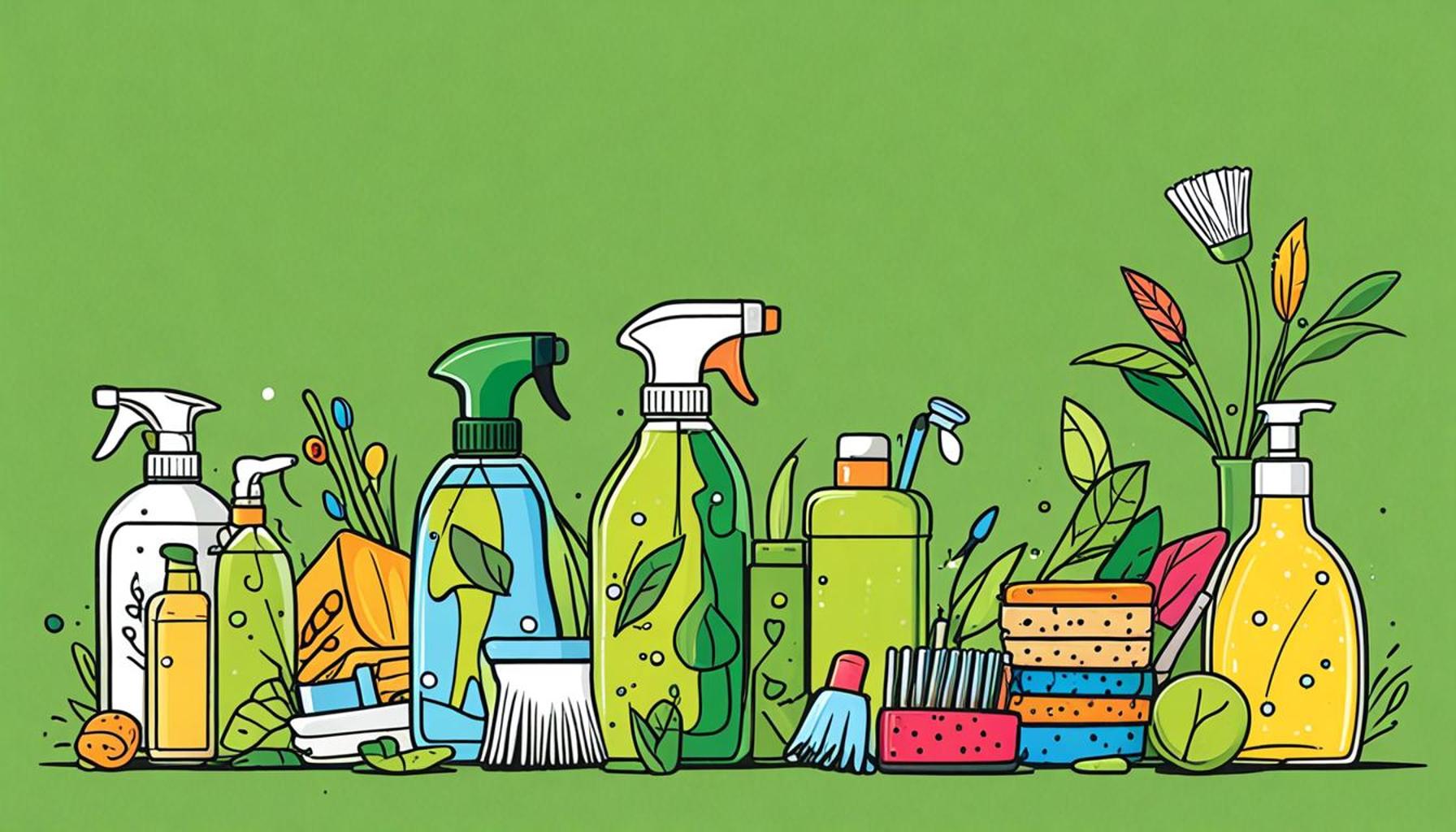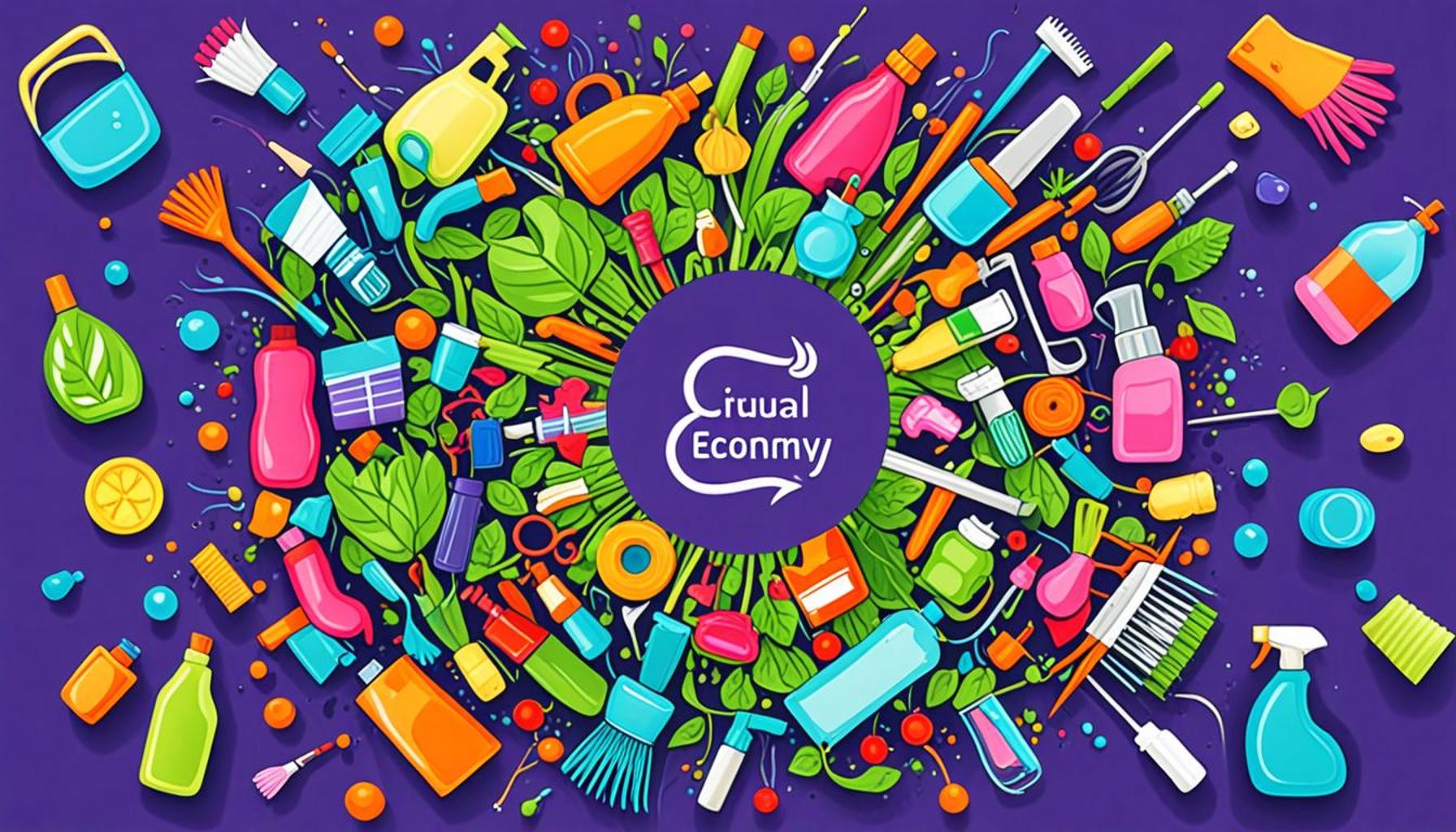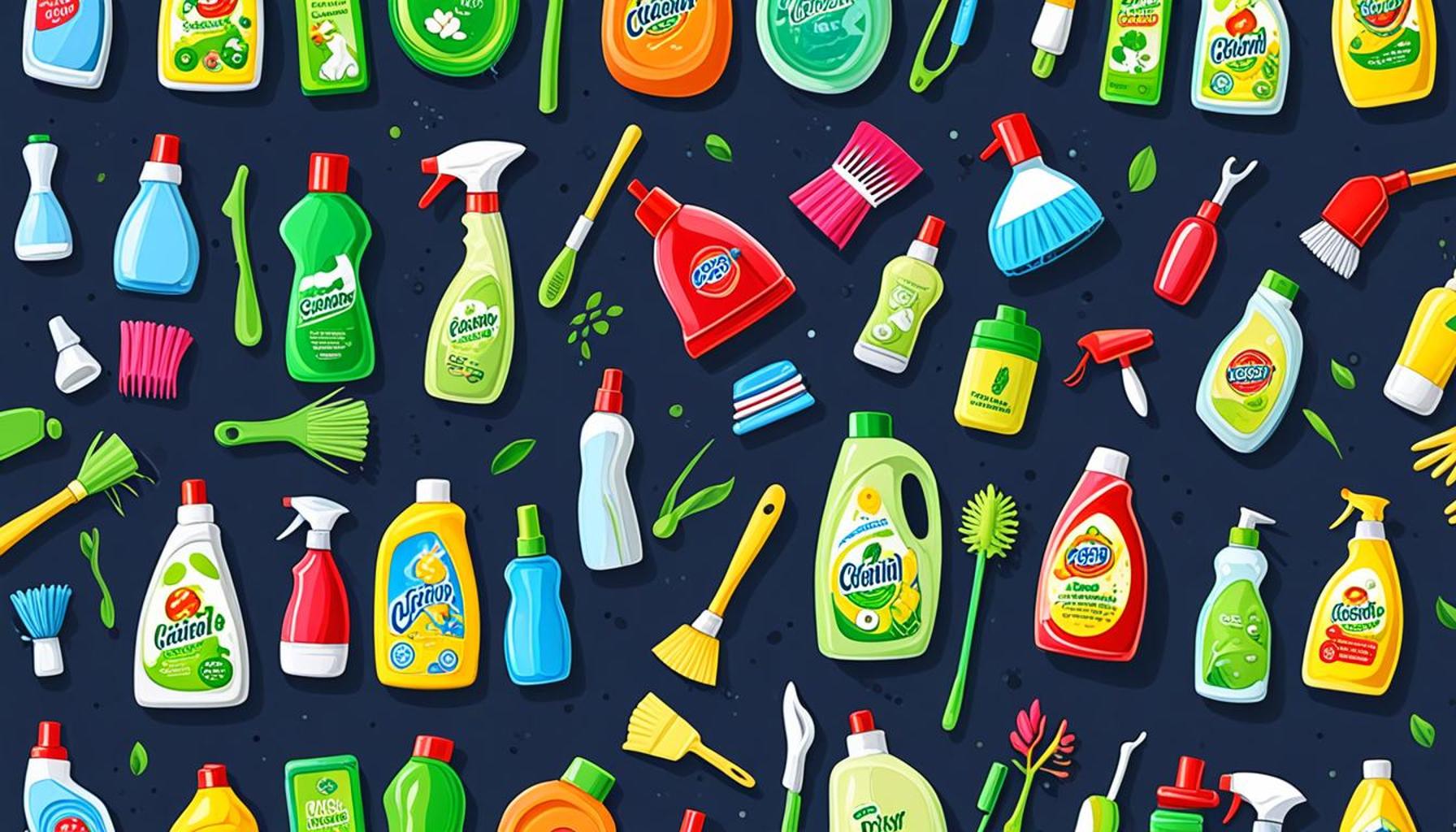Innovations in Eco-Friendly Cleaning Products: Trends and Technologies Transforming the Market

Rising Demand for Sustainable Cleaning Solutions
As global awareness of environmental issues intensifies, the quest for eco-friendly cleaning products has surged dramatically. Consumers are becoming increasingly aware of the potential health risks posed by conventional cleaning agents, many of which are laden with harsh, toxic chemicals. This growing consciousness is not just about buying safer alternatives; it reflects a broader commitment to sustainability and the collective well-being of future generations.
One compelling factor that contributes to this shift is the public’s changing perception of cleanliness and its implications for health. Numerous studies have revealed links between indoor air quality and traditional cleaning products, which can release volatile organic compounds (VOCs) harmful to respiratory health. In turn, this has fueled demand for alternatives that maintain a clean environment without jeopardizing human health or the ecosystem.
Key Innovations Transforming the Cleaning Industry
The landscape of eco-friendly cleaning products is marked by significant innovations designed to meet the evolving needs of consumers. Below, we explore some of these developments:
- Biodegradable Ingredients: A growing number of manufacturers are committed to using natural components that decompose quickly and minimize environmental impact. Such ingredients not only offer an effective cleaning solution but also contribute to reducing land and water pollution.
- Concentrated Formulas: Many brands have adopted concentrated cleaning solutions that require less packaging. This strategy not only conserves resources but also decreases the carbon footprint associated with transportation and waste. For instance, a single concentrated bottle can often produce multiple cleaning solutions, significantly reducing the volume of plastic waste generated.
- Smart Cleaning Technologies: Advances in technology have birthed IoT-enabled devices that allow users to optimize cleaning schedules and monitor usage. Smart systems can learn a household’s specific needs and habits to provide highly efficient cleaning solutions, demonstrating a perfect blend of convenience and eco-friendliness.
Consumer Expectations in an Eco-Conscious World
As consumers navigate this evolving market, they can anticipate several vital trends that enhance transparency and personalization.
- Transparency: Customers are increasingly demanding clear ingredient lists. Brands that transparently share their formulations can leverage trust and loyalty, making ingredient education a priority in their marketing strategies.
- Certifications: Eco-labels like Green Seal and the EPA’s Safer Choice signify that products meet rigorous environmental standards. Shoppers are encouraged to look for these certifications to ensure that the products they choose are genuinely eco-friendly.
- Customized Solutions: Artificial intelligence is rapidly transforming product development, allowing for personalized cleaning solutions. With AI, companies can create products designed to cater to specific consumer needs, which makes cleaning more effective and tailored to individual preferences.
The surge in demand for eco-friendly cleaning products is not merely a passing trend; it represents a fundamental shift in consumer behavior and values. As innovation continues to redefine the market, both households and businesses are adapting their cleaning practices with an eye toward sustainability. The future of cleaning looks bright, promising a cleaner environment and a safer home while addressing the growing call for responsible consumerism. Prepare to explore these thrilling advancements and their impact on daily life as we delve deeper into the world of eco-friendly cleaning.
DIVE DEEPER: Click here for step-by-step cleaning methods
Innovative Approaches to Eco-Friendly Cleaning Solutions
As the market for eco-friendly cleaning products continues to expand, manufacturers are embracing innovative approaches that not only address consumer demands for safer and sustainable options but also redefine the standards of cleanliness. These innovations reflect a commitment to environmental responsibility while maintaining the efficacy expected from traditional cleaning agents.
One prominent trend is the integration of plant-based surfactants into cleaning formulations. Unlike synthetic detergents, which can contribute to water pollution and adversely affect aquatic life, plant-based surfactants are derived from renewable resources, making them a more sustainable alternative. Research indicates that these surfactants maintain their cleaning power without compromising safety, effectively removing dirt and grease while being gentle on both the environment and human health.
The Role of Biotechnology in Cleaning Products
Another breakthrough in the eco-friendly cleaning product sector is the utilization of biotechnology. Innovative companies are harnessing the power of enzymes and microorganisms to create effective cleaning solutions. These biological agents break down organic matter and neutralize odors naturally, offering a powerful cleaning alternative without relying on harsh chemicals. The efficacy of enzyme-based cleaners has been validated through various studies, establishing their credibility in the market.
Further, the use of essential oils in cleaning products has gained traction among consumers seeking natural fragrances as alternatives to synthetic scents. These oils not only impart pleasant aromas but also provide antibacterial and antifungal properties, enhancing the cleaning process without introducing toxic substances into the home environment. With preferences shifting towards naturally derived ingredients, eco-conscious brands are keen to incorporate essential oils into their formulations, thereby aligning with consumer desires for sustainability.
Packaging Innovations Driving Sustainability
Sustainability extends beyond the product itself and into its packaging. Many eco-friendly cleaning brands are implementing innovative packaging solutions to minimize waste and environmental impact. Some brands are introducing refill stations in retail stores, allowing consumers to bring their containers and refill them with cleaning products, drastically reducing single-use plastic waste. Additionally, companies are exploring the use of biodegradable or recyclable materials for their packaging, reflecting a holistic approach to sustainability.
In tandem with these packaging innovations, advances in supply chain technologies are enhancing the overall efficiency of producing and distributing eco-friendly cleaning products. By adopting sustainable sourcing practices and focusing on local production, brands are further reducing their carbon footprint and promoting responsible consumerism.
As these innovative approaches gain traction in the market, they signify a pivotal transition toward more responsible cleaning practices. The transformation of the eco-friendly cleaning product landscape is reshaping consumer expectations and compelling businesses to align with an environmentally-conscious ethos. This ongoing evolution not only fosters a cleaner home environment but also contributes to a healthier planet, urging consumers to embrace these advancements and make conscious choices.
| Trend Category | Key Innovations |
|---|---|
| Biodegradable Formulas | Eco-friendly cleaning products are now increasingly formulated with biodegradable ingredients, allowing for effective cleaning without harming the environment. |
| Sustainable Packaging | Innovations in packaging, such as recyclable and compostable materials, contribute significantly to reducing plastic waste in our ecosystems. |
The market for eco-friendly cleaning products is seeing radical shifts driven by consumer awareness and technological advancements. Select brands are adopting plant-based surfactants, which outperform traditional chemicals without being harmful to aquatic life. This paradigm shift not only caters to environmentally conscious consumers but also promotes sustainable practices within the industry.Another notable trend is the rise of smart cleaning technologies. Companies are now offering cleaning gadgets equipped with apps that guide users through eco-friendly practices, tracking their usage, and recommending optimized cleaning schedules that minimize product wastage. Such technological integrations reflect a growing commitment to sustainability and are reshaping consumer expectations in the cleaning market.Furthermore, the current regulatory landscape increasingly favors eco-innovation, as governments worldwide implement stringent guidelines for chemical usage within cleaning products. This regulatory pressure is fostering an ecosystem where innovation thrives and manufacturers are motivated to invest in green chemistry. Such advancements pave the way not only for improved cleaning efficacy but also for a healthier planet.
DON’T MISS: Click here to discover essential cleaning tips
Technological Advances in Eco-Friendly Cleaning Products
As the eco-friendly cleaning product industry evolves, technological advancements are playing a critical role in enhancing product performance while adhering to sustainability standards. These advancements not only improve the effectiveness of eco-friendly products but also enable brands to cater to environmentally conscious consumers who are seeking out greener alternatives.
Smart Cleaning Technology
One of the most exciting trends in the realm of eco-friendly cleaning products is the rise of smart cleaning technology. Innovations such as IoT-enabled cleaning devices and app-controlled cleaners are gaining popularity, allowing consumers to manage their cleaning routines with greater efficiency. For instance, smart vacuums equipped with sensors can determine the best cleaning route and optimize energy usage, minimizing their environmental footprint. Brands like iRobot have started incorporating eco-friendly materials in their products, pairing advanced technology with sustainable practices.
Moreover, the integration of AI in cleaning products can enhance performance by analyzing data to improve cleaning strategies over time. This technology helps to automate tasks and reduce resource consumption, presenting a promising future for environmentally friendly home care.
Waterless Cleaning Solutions
Another notable innovation is the development of waterless cleaning solutions, which aim to conserve water while maintaining effective cleaning standards. Products that utilize solvents and cleaning agents requiring minimal or no water help address water scarcity issues prevalent in many regions, including areas of the United States facing drought conditions. Brands such as CleanWell have championed this approach, providing consumers with powerful cleaning options that fall in line with sustainable practices.
Waterless cleaning is not just an effort to reduce water usage; it also translates to reduced energy consumption in production and distribution, leading to a smaller overall carbon footprint. This technology is especially appealing to urban consumers looking to improve their sustainability practices within limited living spaces.
Refillable and Concentrated Products
In addition to innovative formulations, eco-friendly brands are also moving toward refillable and concentrated products that enhance sustainability. The introduction of concentrated cleaning solutions allows consumers to dilute their products at home, drastically reducing the volume of packaging and transportation emissions associated with traditional cleaners. Companies like Blueland are leading this charge, offering consumers reusable bottles and tablets that dissolve in water, thereby minimizing plastic waste and creating a more impactful cleaning solution.
Consumer Education and Transparency
As technology and innovation continue to shape the landscape of eco-friendly cleaning products, there is a parallel need for consumer education and transparency. Today’s consumers are more informed and selective about the products they use in their households. Many eco-friendly brands are stepping up to meet this demand by providing clear labeling, ingredient transparency, and information on environmental impacts. This shift not only fosters trust between brands and consumers but also encourages more informed choices that align with sustainable values.
By leveraging these technological innovations, the eco-friendly cleaning product market is positioning itself to attract a broader audience and encourage a lifestyle that prioritizes sustainability. Encouraged by the awareness of consumers regarding environmental impacts, companies are responding with products that fulfill these needs while pushing the boundaries of traditional cleaning practices.
DIVE DEEPER: Click here to discover the benefits of decluttering
Conclusion: The Future of Eco-Friendly Cleaning Products
The ongoing innovations in eco-friendly cleaning products signify a transformative era in the way we approach household cleanliness while safeguarding our planet. As consumers become increasingly aware of their impact on the environment, the shift toward sustainable alternatives reflects broader societal trends prioritizing health and ecological responsibility. From smart cleaning technologies that optimize energy and resource use to waterless cleaning solutions that address real-world challenges like water scarcity, the advancements in this market are addressing both consumer convenience and environmental needs.
Furthermore, the rise of refillable and concentrated products is not only curbing plastic waste but also reshaping consumer behavior around cleaning practices. With brands like Blueland leading the way, consumers are empowered to make choices that have a lasting positive impact on the environment. The emphasis on transparency and education plays a pivotal role as well; informed consumers are now able to navigate their choices with confidence, fostering a deeper trust between brands and their customers.
Looking ahead, the eco-friendly cleaning product market is set to thrive, driven by a blend of innovative technologies and a consumer base committed to sustainable living. As new trends emerge and existing technologies enhance product performance, the future is bright for those seeking a cleaner, greener way to maintain their homes. By embracing these innovations, consumers are not just cleaning their spaces; they are also contributing to a larger movement toward a sustainable future.


